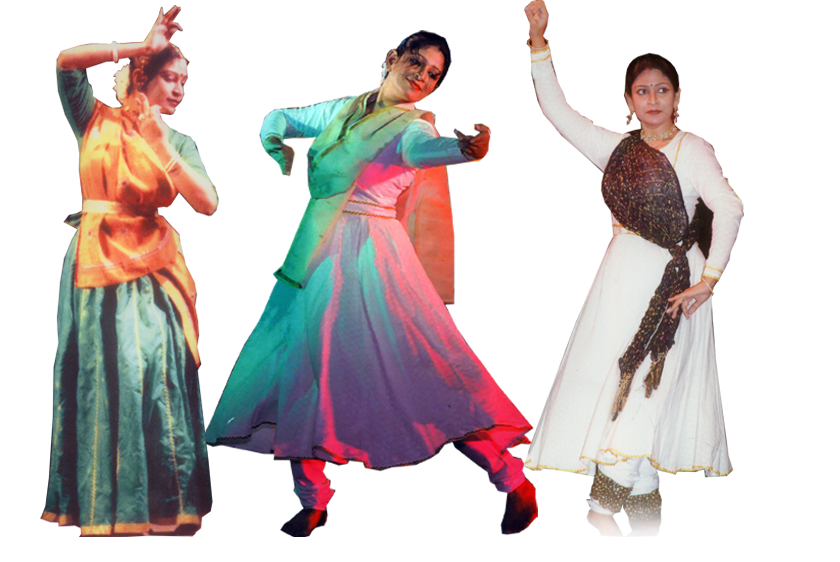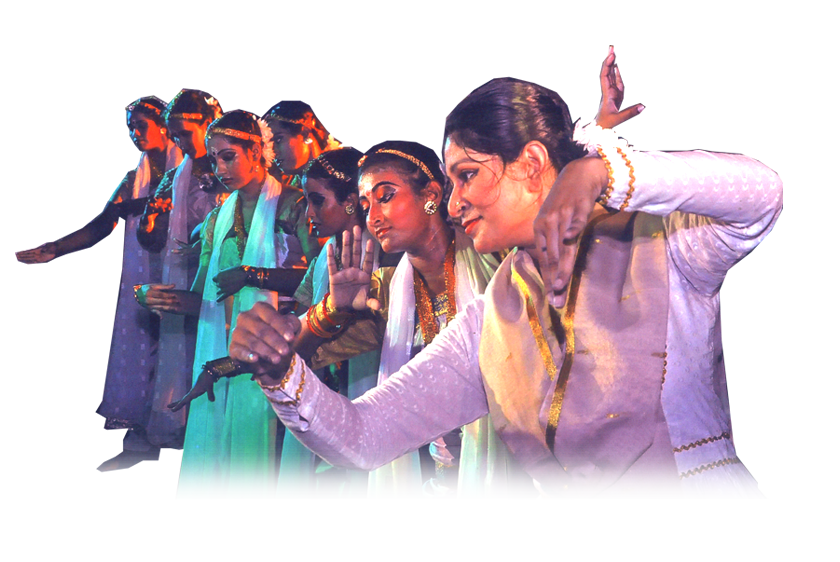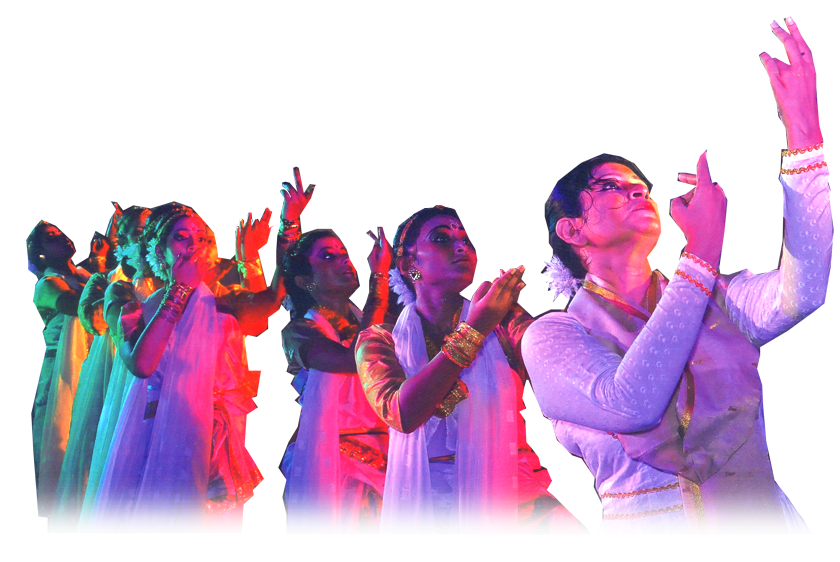 |
|
   |
||
About Kathak |
|||||||||||||||
| Originating from north Indian states, in ancient Indian temples Brahmin priests (pandits) used to narrate the stories of gods and goddesses through dance. They were known as kathakar and the dance came to be known as "kathak". | |||||||||||||||
The significance of its origin in temples in keeping with other art forms in India is that it is beyond a mere art form but a synthesis of the sacred and the secular. It is in sync with "Nad Brahma", that manifestation of the Almighty as Sound, and is one of the predominant way of expression of devotion to the Almighty. The story tellers recited various stories to teach the laymen simple, beautiful and the most important spiritual aspects of life. The spirituality of the art revolves around the two cosmic dancers. "Vishnu" known as "Natvar" or hero of dance and "Shiva" known as "Natraj" or king of dance. It is the interlude of these two cosmic dancers that balances the very creation of "Brahma", the creator of the universe. |
|||||||||||||||
| The earliest reference to this dance as found in two Mauryan period epigraphies : | |||||||||||||||
| i) a Prakrit verse from the 4th century BC describing the dance of Kathak on the banks of the Ganges of Varanasi that pleased Lord Adinath, ii) the 3rd BC verse 'nrityadharmam kathakaaccha devalokam' |
|||||||||||||||
| and the other three refences in the Adiparva, the Anusasana parva and the Sabha parva of Mahabharata, indicate that this form of dance has a history of well over 2500 years. | |||||||||||||||
| There are two major schools or gharana of kathak from which performers today draw their linage, the gharanas of Jaypur & Lukhnow ( born in the courts of the kachwaha Rajput Kings, the Nawab of Awadh, respectively) and Varanasi. There is also a less prominant (and later) Raigharh gharana with amalgamated techniques from the preceeding gharanas, but became famous for its own distinctive compositions. | |||||||||||||||
Powered By : www.calcuttayellowpages.com |
|||||||||||||||